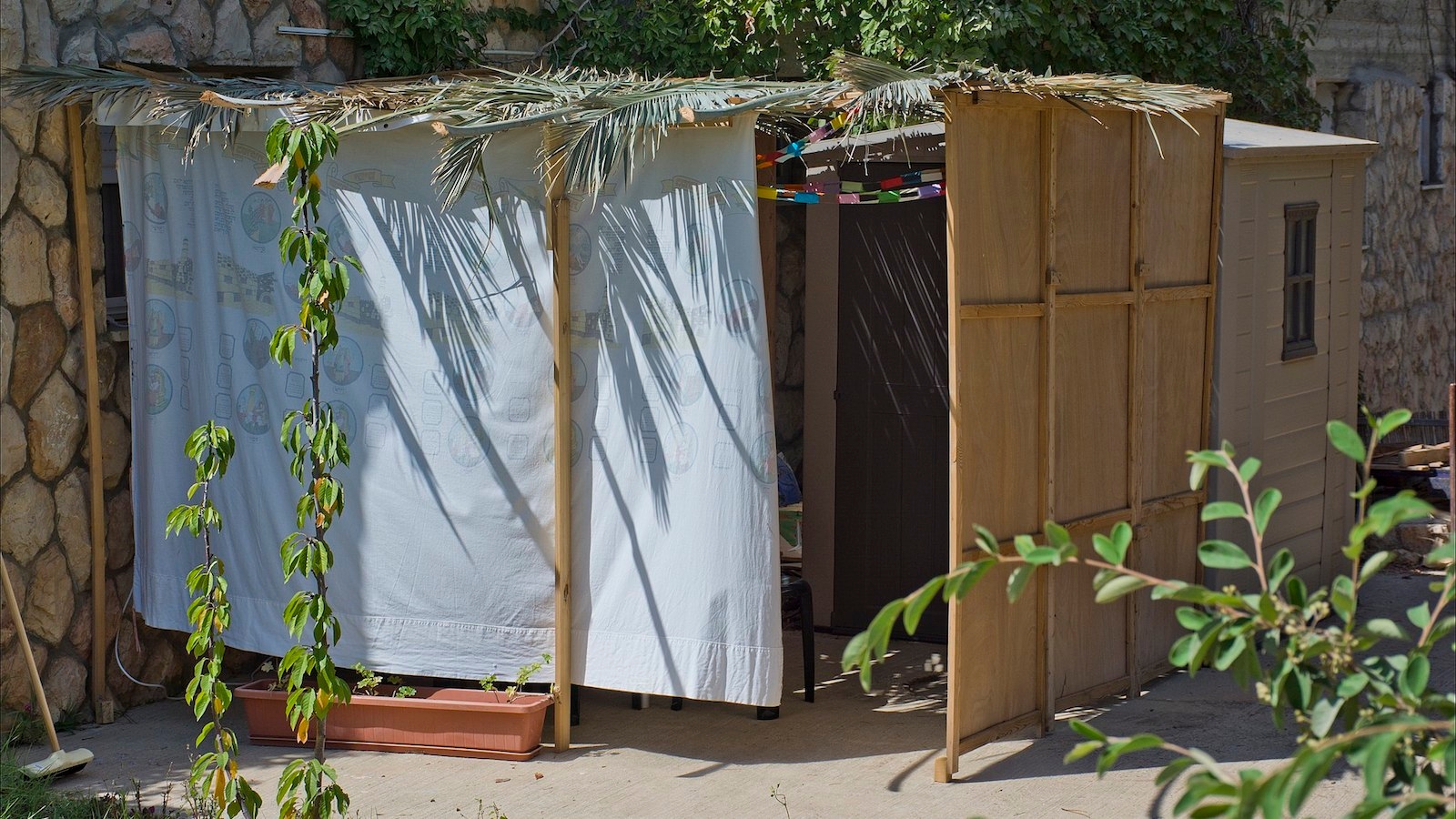1. According to Bet Shammai, the must be large enough to contain a man’s head, most of his body, and his table (Talmud, Sukkah 2:7).
2. The walls of the sukkah may be made of any material, but must be sturdy enough to withstand an ordinary wind (Code of Jewish Law, Orach Chayim 630: 10).
3. It is meritorious to start building the sukkah immediately after Yom Kippur, even if it is Friday, because a chance to perform a precept should not be put off. One should choose for it a clean site. Everyone should build the sukkah,even if one is an eminent person (Code of Jewish Law, Condensed Version, Chapter 134).

Help us keep Jewish knowledge accessible to millions of people around the world.
Your donation to My Jewish Learning fuels endless journeys of Jewish discovery. With your help, My Jewish Learning can continue to provide nonstop opportunities for learning, connection and growth.
4. There are many different opinions regarding the roofing of the sukkah. However, since we generally cover it with the branches of trees, or with reeds, which are detached products of the soil and not subject to defilement and are not tied together, there is no cause for scruples (Code of Jewish Law, Condensed Version, Chapter 134).
5. Enough boughs should be placed upon the sukkah so as to have more shade than sun. If it has more sun than shade, it is invalid. It is therefore necessary to put on enough branches, so that even if they should dry up, there would still be more shade than sun (Code of Jewish Law, Condensed Version, Chapter 134).
6. A sukkah that is erected underneath the branches of a tree is invalid. Even if the branches by themselves would provide more sun than shade, and the sukkah has been adjusted by means of putting there on extra branches, it is, nevertheless, invalid (Code of Jewish Law, Condensed Version, Chapter 134).
7. The obligation may be fulfilled with a borrowed sukkah but not with one that is stolen. Hence, a sukkah may not be erected on a public place. In an emergency, however, when one has no other sukkah available, one may sit in such a sukkah and say the prescribed benediction (Code of Jewish Law, Condensed Version, Chapter 134).
Excerpted from Every Person’s Guide to Sukkot, Shemini Atzeret, and Simchat Torah. Reprinted with permission of the publisher. Copyright 2000 Jason Aronson, Inc.



